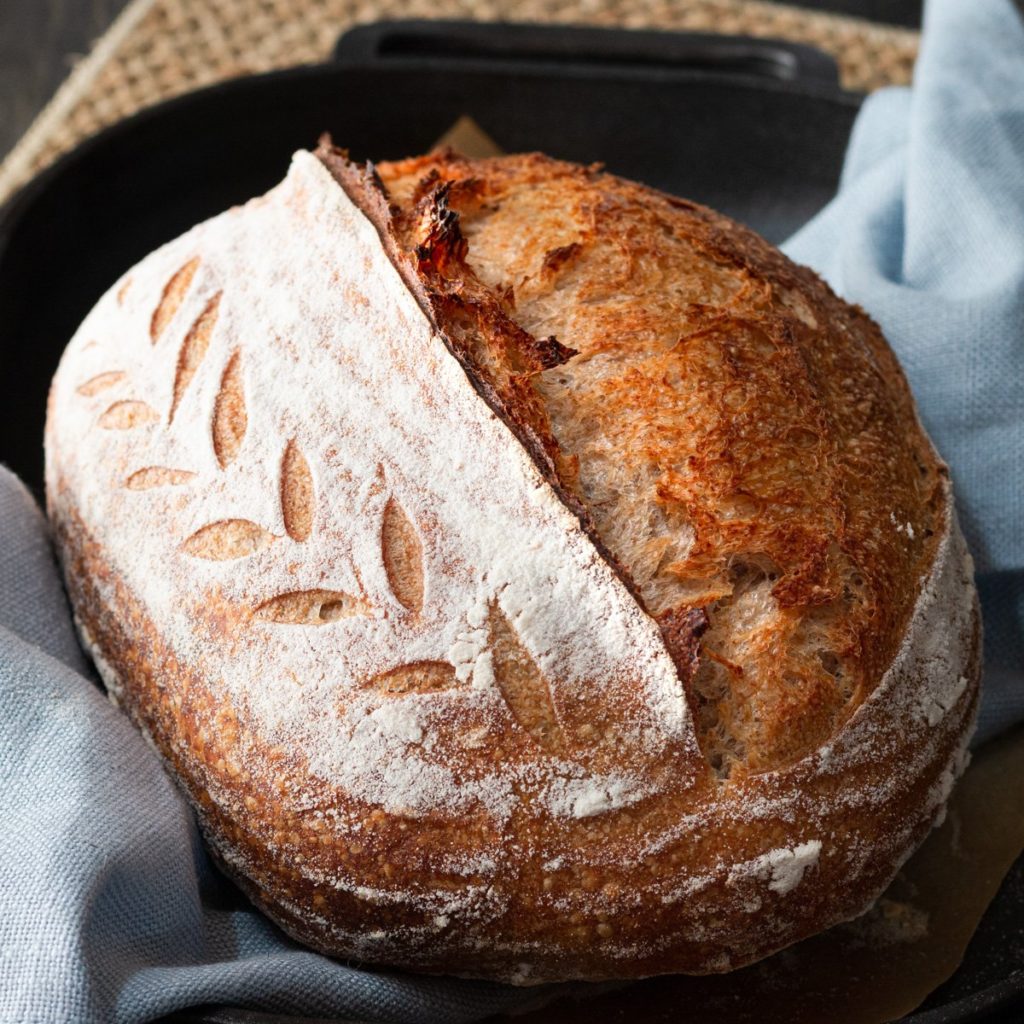The Stretch and Fold, Coil Fold, and my favorite the "Wrap" is how we build structure during the bulk fermentation phase with sourdough bread. "Structure" is strengthening the gluten strands so they hold shape and are strong, but are elastic, too. Where traditional bread using commercial yeast use "kneading" - with sourdough we "build structure".

With this post, I'm starting off with a Coil Fold demo videos for you, then the Stretch & Fold, and finally the Wrap. The videos are of different loaves, different days, and basically just any footage I caught while doing a coil, a stretch & fold, and the stretch & wrap. I think they'll help you!
What will really help, though, is if you read a bit below on why we handle sourdough this way and what's happening inside the dough during this step. It's a 2-minute explanation. It will help!
How to Coil Fold to Build Structure In Sourdough Bread
How To Stretch and Fold to Build Structure In Sourdough Bread
How to Stretch and Wrap to Build Structure in Sourdough Bread
Last but not least is my preferred method, a wrapping type method that I saw about a year ago with one baker named Tim Passmore, but otherwise haven't found anyone else using it. I wasn't even sure what to call it other than The Wrap. If anyone out there knows what this is named, please let me know! It has all the best qualities of both the stretch and fold and the coil. It provides more lamination and strengthens the dough more quickly than the other 2 methods. I hope you give this one a try! It's a little unwieldy with the first set, as are the other 2, but it works itself into a nice tight cohesive mass very quickly.
It's because of the active fermentation that makes sourdough special.
Sourdough's wild yeast is consuming the energy in the flour, creating a bubbly and airy fermentation that is building up inside the dough.
This process starts happening as soon as the sourdough starter is added to the flour mixture.
Fermentation gives us a light and springy interior with lacy air bubbles.
Traditional kneading of the dough would prevent the light and airy Co2 bubbles from forming, making a dense interior.
What's happening inside the dough:
- Wild yeast + flour = fermentation
- Fermentation makes CO2 gas (air bubbles)
- Plus, lactic acids that make a creamy, tangy, light, and lacy interior structure in your finished baked bread.
That's what we want. That is the goal. That makes sourdough special.
We have our final dough mix ready and the bulk fermentation phase begins. Our sourdough starter's wild yeast is ready to work.
The bulk ferment has 2 stages:
- building structure phase
- undisturbed phase
Fermentation can be a pretty disorganized thing so "building structure" in the gluten will allow a strong but stretchy framework for the fermentation to do its thing but in an organized way which gives us AMAZING bread that not only tastes great but is also light and creamy with lovely oven spring.
Building structure using different techniques. Do you have to use one over the other?
No. You have choices! If you're new to sourdough I would suggest you try all 3 of these techniques and see which one suits you best. Each of them has its place and will generally yield the same results. However, there are unique situations why I think the coil, the stretch & fold, or the wrap might be more suited.
If you're learning about sourdough you might also like How To Shape A Batard
And if you're looking for a great sourdough forum where you can find just about any answer to a question, I like: The Fresh Loaf


Tanya
These videos were great!! Thank you!!
Maria
Hi Sara, thank you for these videos! Very helpful! I wanted to ask you where did you get the colorful covers of your bread? Thank you
Sara Kennedy
Hi Maria! They're shower caps that I bought in the shampoo section of the grocery store. 🙂
Anonymous
My sourdough starter will double in size but some times will not pass the float test when at its maximum height . I assume as it has this level of strength lt should be okay to proceed and. Bake the bread. Any advice would be welcome.
Best regards
Dermot
Sara Kennedy
Hi Dermot - I love these questions! The short answer is yes - definitely ok to proceed (in my opinion). If you have activity in the starter or leaven (bubbles, doubling, looks and feels light and airy, smells ripe) then you're good to go. After several bakes you'll probably skip doing the float test altogether & just go by eye. It's a good benchmark for new bakers so that's why we usually include that step. There's a great website/forum that I refer to often. I'll link it & it should go right to the search results for keyword 'float test'. It's basically a community of bakers who share tips/tricks, they debate and argue and you'll often find conflicting opinions but it's useful overall. You'll probably find other people who are having the same issues. I was recently on it to find out more about spraying loaves with water before baking. Feel free to ask me here or email me anytime, as well. Cheers! http://www.thefreshloaf.com/search/node/float%20test